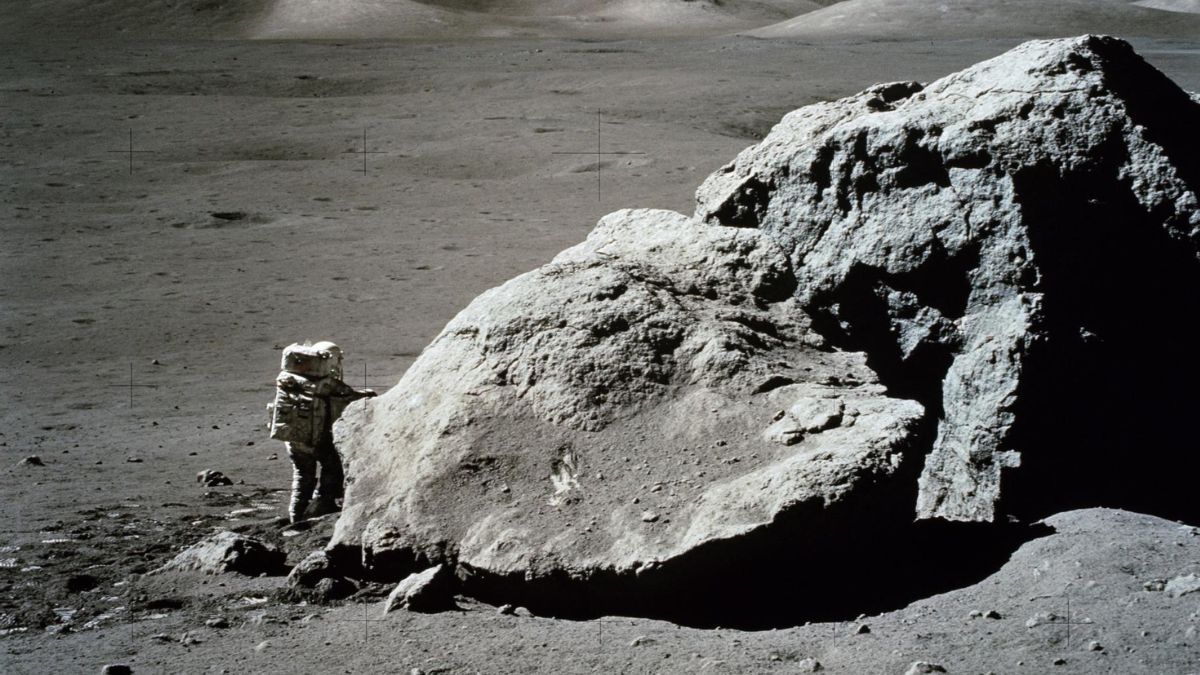Science
The Satellite Swarm Is Now a Threat, NASA Warns
17 December 2025

More than half a century ago, astronauts brought back a sample no one dared to open. Now, NASA scientists have finally examined its interior—and what they discovered could fundamentally rewrite lunar history. The findings from this 50-year-old sample make it one of the most extraordinary studies in the Apollo program’s history, directly challenging the prevailing moon rock origin theory.
When Gene Cernan and Harrison Schmitt hammered a metallic cylinder into the lunar dust, they had no idea they were extracting material that would eventually undermine one of the largest theories about the Moon’s origins. Following the Apollo 17 mission, the sample was sealed in a helium chamber and set aside for five decades.
NASA intentionally left the sample sealed, waiting until future technology allowed scientists to properly examine its contents. That moment arrived after 53 years. James Dottin’s team at Brown University opened the time capsule and found something completely unexpected. The findings were published in the journal JGR Planets.
Within the half-century-old samples, scientists discovered traces of sulfur—but not the type they anticipated. It turned out to be a different, rare isotope that contrasts surprisingly with the sulfur found on Earth. The difference is so significant that it calls into question previous assumptions about the Moon’s true genesis.
“Previously, we believed the Moon’s mantle had the same sulfur isotope composition as Earth,” Dottin explained. “That’s what I expected when analyzing these samples, but I saw values highly divergent from anything we find on Earth.“ The researcher initially believed it was a mistake, yet the rocks were re-examined.
Dottin used Secondary Ion Mass Spectrometry—a precise measuring tool unavailable five decades ago. The re-analysis yielded the exact same results. Sulfur-33, a variant common on Earth, proved rare in the lunar samples. This drastically alters our understanding of the Silver Globe’s formation, specifically our established moon rock origin theory.
Why does the Moon contain such small quantities of the Earth’s sulfur variant? Until now, scientists generally assumed our satellite formed primarily from fragments of Earth material. This latest chemical analysis fundamentally disrupts that theory, and the Brown University researchers offer two hypotheses to replace it.
First, the Moon might have formed primarily from the matter of Theia, a Mars-sized protoplanet that collided with Earth billions of years ago.
Second, the possibility relates to a slightly later stage in the Moon’s life. Early in its existence, the Moon may have possessed a thin atmosphere where sulfur reacted with the Sun’s ultraviolet radiation. This would have altered the isotope proportions. However, for the altered material to reach the mantle, it would have had to sink from the surface and subsequently return via a volcanic eruption.
“That would constitute evidence of ancient material exchange between the lunar surface and the mantle,” Dottin stated. On Earth, plate tectonics drive such phenomena; however, the Moon lacks plate tectonics. Therefore, this presents researchers with yet another mystery: how did such processes occur on the Silver Globe?
For now, Dottin suggests they can confirm one of the two hypotheses by analyzing sulfur isotopes on Mars and asteroids. If their composition is similar to that of the Moon, then all these bodies likely originated from the protoplanet Theia. Otherwise, the presence of the specific element type results from processes related to the Moon’s atmosphere and internal tectonics.
Read this article in Polish: Tajemnica skały z Księżyca ujawniona. Po 50 latach NASA otworzyła kapsułę